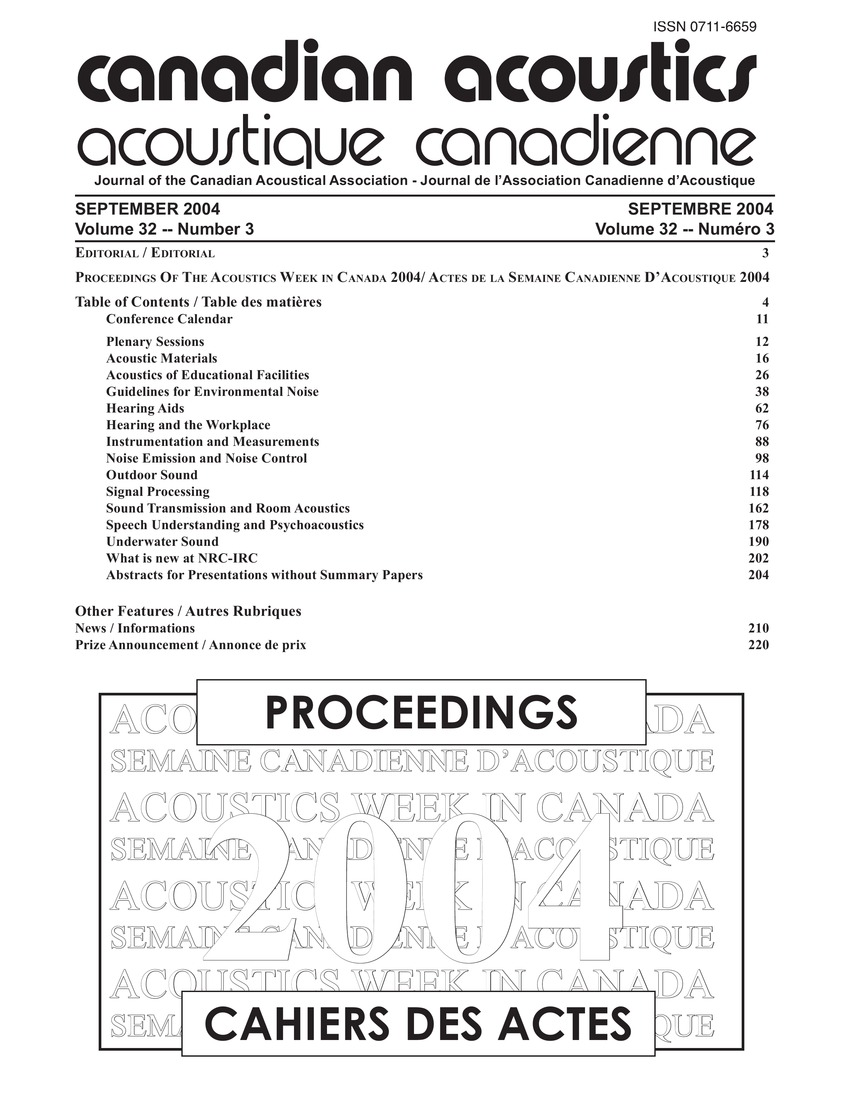Use of sound quality metrics for the analysis of automotive intake noise
Keywords:
Air cleaners, Automobiles, Data acquisition, Dynamometers, Engines, Frequencies, Frequency modulation, Harmonic analysis, Passenger cars, Pressure effects, Speech intelligibility, Articulation index analysis, Induction noise analysis, Psychoacoustic metrics, Sound qualityAbstract
The automotive intake noise was analyzed using a psychoacoustic metrics. The psychoacoustics involves the quantitative evaluation of acoustic sound pressure level using a sound quality metrics. The metrics includes loudness, sharpness, roughness, fluctuation strength and articulation index. Loudness a standard metric describes the human preception of loud source perceived as opposed to a simply reported sound pressure level. Roughness and fluctuation strength describes the annoyance of modulating sound and sharpness describes the high frequency annoyance of noise by applying a weighting factor on sounds above 2kHz.Additional Files
Published
How to Cite
Issue
Section
License
Author Licensing Addendum
This Licensing Addendum ("Addendum") is entered into between the undersigned Author(s) and Canadian Acoustics journal published by the Canadian Acoustical Association (hereinafter referred to as the "Publisher"). The Author(s) and the Publisher agree as follows:
-
Retained Rights: The Author(s) retain(s) the following rights:
- The right to reproduce, distribute, and publicly display the Work on the Author's personal website or the website of the Author's institution.
- The right to use the Work in the Author's teaching activities and presentations.
- The right to include the Work in a compilation for the Author's personal use, not for sale.
-
Grant of License: The Author(s) grant(s) to the Publisher a worldwide exclusive license to publish, reproduce, distribute, and display the Work in Canadian Acoustics and any other formats and media deemed appropriate by the Publisher.
-
Attribution: The Publisher agrees to include proper attribution to the Author(s) in all publications and reproductions of the Work.
-
No Conflict: This Addendum is intended to be in harmony with, and not in conflict with, the terms and conditions of the original agreement entered into between the Author(s) and the Publisher.
-
Copyright Clause: Copyright on articles is held by the Author(s). The corresponding Author has the right to grant on behalf of all Authors and does grant on behalf of all Authors, a worldwide exclusive license to the Publisher and its licensees in perpetuity, in all forms, formats, and media (whether known now or created in the future), including but not limited to the rights to publish, reproduce, distribute, display, store, translate, create adaptations, reprints, include within collections, and create summaries, extracts, and/or abstracts of the Contribution.


